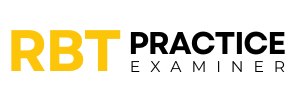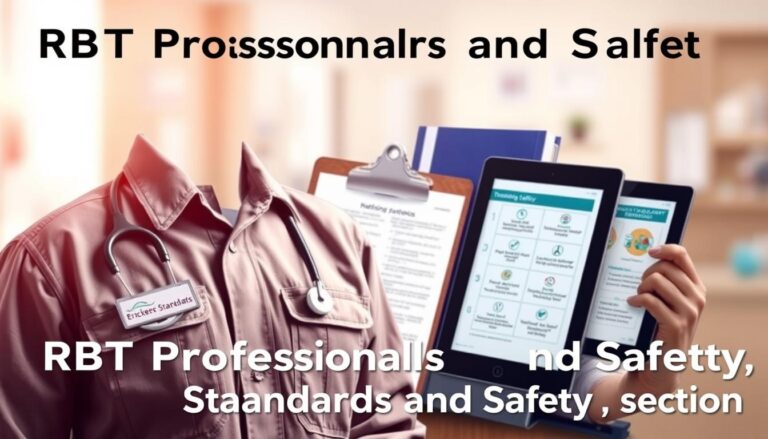RBT Responsibilities: What You Need to Know
Becoming a Registered Behavior Technician (RBT) is a rewarding career. It needs dedication, compassion, and special skills. Your job is key in helping people with developmental challenges, like autism.
Your role goes beyond just doing tasks. You’ll help create plans, collect data, and support clients in learning life skills. This job requires precision, empathy, and a strong commitment to positive change.
Working in this field means your actions can greatly help families and individuals with developmental disorders. Your skill in using behavior modification can change lives.
RBTs must follow high professional standards. You’ll work with Board Certified Behavior Analysts (BCBAs) to use strategies that help clients grow and become independent.
Your career will face many challenges that test your skills, patience, and emotional strength. Successful RBTs are adaptable, communicate well, and truly care about helping others.
Being an RBT means always learning and growing, and sticking to ethical practices. Every interaction is a chance to make a big difference in someone’s life, helping them reach their full ability.
This guide will cover the key parts of being an RBT. You’ll learn about the job’s needs, daily tasks, and important skills for success in this meaningful career.
The Role of a Registered Behavior Technician
The role of RBT is key in behavioral healthcare. It helps people with developmental challenges and autism. Registered Behavior Technicians (RBTs) work under supervision to use behavior intervention strategies.
To become an RBT, you need to grow professionally and get specialized training. This job requires a mix of skills, compassion, and technical knowledge.
Core Components of RBT Certification
The certification process has several steps:
- Complete a 40-hour training program
- Pass a background check
- Successfully complete a competency assessment
- Pass the official RBT certification exam
Educational Requirements and Training
While a specific degree isn’t needed, RBTs usually have:
- High school diploma or equivalent
- Minimum age of 18 years
- Completion of specialized behavioral intervention training
- Ongoing supervision by a Board Certified Behavior Analyst (BCBA)
Professional Standards and Ethics
RBTs must follow strict ethical guidelines from the Behavior Analyst Certification Board (BACB). Professional integrity and client confidentiality are key in this role.
This job is not just about technical skills. It also needs empathy, patience, and a real commitment to helping those with unique needs.
What Is One of Your Responsibilities as an RBT

As a Registered Behavior Technician (RBT), your main job is to carry out behavior plans. This role needs precision, care, and a strong grasp of applied behavior analysis (ABA) principles.
Your duties as an RBT include working with clients, often kids with autism. You help them reach their developmental and behavioral goals. Your main tasks are:
- Implementing specific behavioral strategies
- Collecting accurate data on client progress
- Maintaining consistent communication with supervisors
- Creating a supportive learning environment
One key part of being an RBT is direct skill intervention. You’ll work directly with clients, using proven methods to improve their skills. You’ll do this under the watch of a Board Certified Behavior Analyst (BCBA), who creates the plans you follow.
Your job demands careful attention to detail. You’ll record client interactions, track changes, and share important feedback with your BCBA. This helps track the client’s progress and any challenges they face.
Your work has a big impact. By using behavioral strategies, you help clients gain important life skills. This improves their quality of life.
Essential Daily Tasks and Duties in Behavior Support
Registered Behavior Technicians (RBTs) play a key role in helping people with behavioral challenges. Their work is detailed and requires care, empathy, and a systematic approach.

RBTs handle many important tasks that help clients make progress. They must be ready to do several critical jobs every day.
Data Collection and Documentation
Keeping accurate records is a big part of an RBT’s job. They focus on:
- Recording client behavioral observations
- Tracking intervention outcomes
- Maintaining detailed session notes
- Ensuring compliance with clinical standards
Implementing Behavior Plans
RBTs carry out behavior plans made by Board Certified Behavior Analysts (BCBAs). It’s important to follow these plans carefully for client growth.
- Review individualized behavior plans
- Apply intervention techniques consistently
- Adapt strategies based on client responses
- Communicate progress with supervisory team
Progress Monitoring Techniques
Tracking progress is key for RBTs to see if interventions work. They use:
- Quantitative data analysis
- Periodic skill assessments
- Graphical representation of behavioral changes
- Regular reporting to clinical supervisors
By doing these tasks well, RBTs help improve client outcomes and support overall behavioral health.
Client Interaction and Communication Protocols

Registered Behavior Technician duties go beyond just technical work. They are key in client interaction and communication. This is the heart of successful behavior therapy, needing special skills and empathy.
These professionals must craft communication plans for each client. They aim to create safe, supportive spaces where clients feel heard and valued.
- Establish trust through consistent, gentle interactions
- Use age-appropriate communication techniques
- Implement visual support systems
- Practice active listening
- Maintain professional boundaries
Non-verbal communication is vital in behavior therapy. RBTs must read subtle signs, responding with patience and understanding. This helps clients who find it hard to communicate verbally.
| Communication Strategy | Purpose | Key Techniques |
|---|---|---|
| Visual Supports | Enhance understanding | Picture cards, schedules, emotion charts |
| Positive Reinforcement | Encourage desired behaviors | Verbal praise, reward systems |
| Emotional Regulation | Manage client emotions | Calm voice, predictable responses |
Good client interactions need ongoing learning and flexibility. RBTs must stay adaptable, responsive, and caring in their work.
Collaboration with BCBA Supervisors and Treatment Teams
Registered Behavior Technicians (RBTs) are key in applied behavior analysis. They work closely with Board Certified Behavior Analysts (BCBAs) and treatment teams. This teamwork is vital for delivering top-notch behavioral interventions and helping clients make progress.
Reporting Structure and Communication Channels
RBTs must keep communication clear and consistent with the treatment team. They report directly to BCBAs, who guide and supervise their work. This ensures the interventions are effective and well-planned.
- Direct reporting to assigned BCBA supervisor
- Regular verbal and written progress updates
- Documented communication of client observations
- Adherence to established communication protocols
Supervision Requirements
Behavior technician responsibilities include regular supervision sessions. These sessions help ensure the interventions are of high quality and consistent.
| Supervision Type | Frequency | Duration |
|---|---|---|
| Direct Supervision | Minimum 5% of intervention hours | 10-15 minutes per session |
| Indirect Supervision | Monthly review | 30-45 minutes |
Team Meeting Participation
RBTs are important members of the treatment team. They share insights from their direct client interactions. Being active in team meetings helps improve intervention strategies and ensures complete client care.
- Sharing detailed client observations
- Discussing progress and challenges
- Collaborating on treatment plan modifications
- Providing frontline perspectives
Safety Measures and Crisis Management
Safety is key for RBTs. They make sure clients are safe and handle crisis situations well.
Knowing your job as an RBT means you must plan for safety. This keeps clients and workers safe during therapy.
- Recognize early warning signs of possible behavioral problems
- Use techniques to calm things down before they get worse
- Stay calm and professional, even when things get tough
- Write down all safety issues that happen
Handling crises needs special training and emotional smarts. RBTs must learn to:
- Quickly spot and assess risks
- Talk clearly with clients
- Use approved ways to handle problems
- Keep everyone safe
Keeping up with training is important for safety skills. RBTs should always learn new things at workshops and meetings.
Good crisis management is about preventing, intervening, and learning from experiences. By focusing on safety, RBTs help create positive environments for everyone.
Professional Development and Ongoing Training
Professional growth is key for Registered Behavior Technicians. It ensures they keep up with the latest standards. This way, they can offer the best support to those with behavioral challenges.
Being an RBT means more than just getting certified. The Behavior Analyst Certification Board (BACB) has rules to help you improve your skills and knowledge.
Continuing Education Requirements
RBTs need to keep their certification by following certain rules. These include:
- Doing annual renewal training
- Staying involved in ongoing professional growth
- Keeping up with certification through regular checks
Skill Enhancement Opportunities
There are many ways for RBTs to grow professionally. Some important options are:
- Specialized workshops on certain behavioral techniques
- Online courses in applied behavior analysis
- Going to professional conferences and networking events
- Advanced training programs
Career Advancement Pathways
The role of RBT can lead to bigger career opportunities in behavioral health. Some paths include:
- Becoming a Board Certified Behavior Analyst (BCBA)
- Specializing in certain groups or methods
- Getting into leadership roles in behavioral health
Investing in your growth as a Registered Behavior Technician can lead to exciting career paths. It also helps make a big difference in supporting people with different behavioral needs.
Legal and Ethical Considerations for RBTs
Registered Behavior Technicians (RBTs) face many legal and ethical challenges. Their work goes beyond just helping clients. It includes following important rules that keep everyone safe.
Important ethical rules for RBTs include:
- Keeping client confidentiality strict
- Following HIPAA rules
- Sticking to Behavior Analyst Certification Board (BACB) rules
- Staying within professional limits
RBTs must always act with integrity. They must report abuse or neglect, protect client rights, and talk openly with their teams.
Legal duties for RBTs are also key:
- Writing down interactions correctly
- Telling about any ethical issues
- Getting consent from clients
- Keeping professional boundaries
RBTs must always think about their actions and how they fit into professional standards. They need to keep learning and growing to handle these complex rules.
Good RBTs mix kindness with strict rules. This way, they provide the best support for people with behavioral challenges.
Conclusion
Becoming a Registered Behavior Technician (RBT) is a big step towards making a real difference in people’s lives. RBTs do more than just follow instructions. They help clients with developmental challenges in a big way.
Knowing your role as an RBT means seeing how important you are in helping clients. You play a key part in their progress through applied behavior analysis.
Growing in this field means always learning, being ethical, and caring deeply. RBTs are key in supporting those with autism, intellectual disabilities, and behavioral issues. Your hard work helps clients learn important life skills and reach their goals.
If you’re thinking about becoming an RBT, you need to be ready for a lot. You’ll need to learn a lot, keep your certification up, and always be learning more. This job is rewarding and lets you grow both personally and professionally.
Start by looking into what it takes to become an RBT. Look into certification, join groups like the Behavior Analyst Certification Board, and find programs in applied behavior analysis. Taking this step can lead to making a big difference in someone’s life.







